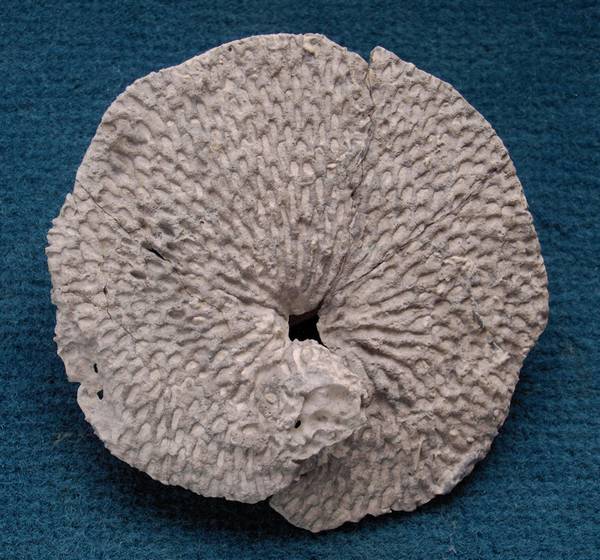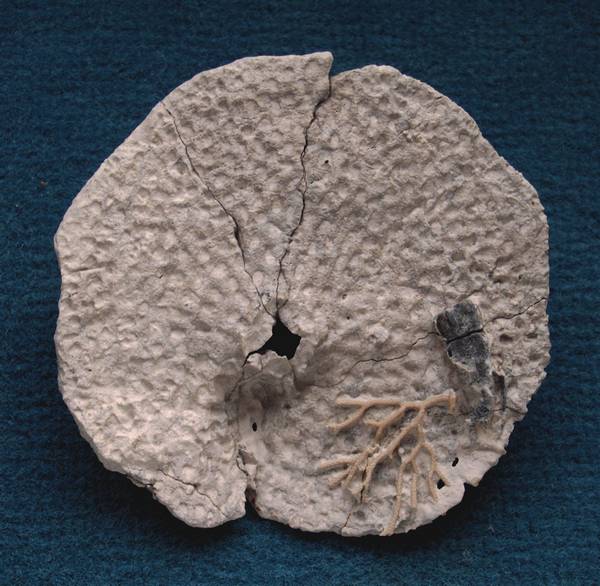

? Orthodiscus fragilis
Schrammen 1924
Orthodiscus fragilis was first described by Schrammen (1924) as a rare species from the Upper Campanian of Misburg. The specimen shown here from its dermal and gastral side (upper and lower image, respectively) originates from the Lower Campanian of Höver. (Colony of bryozoans, bottom right.)
The present specimen consists of a flat disc, with circular postica on its upper side and oval ostia on the lower (dermal) side. The specimen is somewhat different from Schrammen's Orthodiscus fragilis, which may be due to its different geological age. The radial folds on the underside of the present specimen are less pronounced and are more or less restricted to the central part of the sponge. The oval (1.5 by 3 mm) ostia are well exposed, while they seem to be conceiled between fold ridges in Schrammen's example. The wall thickness is only 3 mm (rather than 5 mm), and the postica are 2 to 3 mm wide (rather than 3 to 5 mm, as reported by Schrammen (1924)).
The skeleton consists of fused lychnisks, which form a fairly regular meshwork. A cortical surface layer with many tiny pores is developed on both sides.